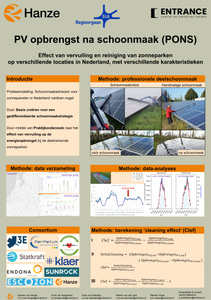Learning analytics is the analysis of student data with the purpose of improving learning. However, the process of data cleaning remains underexposed within learning analytics literature. In this paper, we elaborate on choices made in the cleaning process of student data and their consequences. We illustrate this with a case where data was gathered during six courses taught via Moodle. In this data set, only 21% of the logged activities were linked to a specific course. We illustrate possible choices in dealing with missing data by applying the cleaning process twelve times with different choices on copies of the raw data. Consequently, the analysis of the data shows varying outcomes. As the purpose of learning analytics is to intervene based on analysis and visualizations, it is of utmost importance to be aware of choices made during data cleaning. This paper's main goal is to make stakeholders of (learning) analytics activities aware of the fact that choices are made during data cleaning have consequences on the outcomes. We believe that there should be transparency to the users of these outcomes and give them a detailed report of the decisions made.
DOCUMENT
Traditionally, most cleaning activities take place in the evening or during nighttime.In the Netherlands, day-time cleaning is becoming increasingly popular. It is however unknown how day-time cleaning affects perceptions and satisfaction of end-users. An experimental field study was conducted on trains of Netherlands Railways (NS) to determine how the presence of cleaning staff affects perceptions and satisfaction of train passengers.
DOCUMENT

In sexual assault cases, the retrieved DNA quantity and sampling location from the victim’s underwear may provide valuable information for activity level evaluative reporting. DNA can transfer from site to site on an exhibit, or be lost within packaging, complicating interpretation. Experiments are needed to investigate these factors. This preliminary study compared two cleaning methods to prepare undergarments for such experimentation: hand-washing with warm water and washing with bleach before rinsing. Results show a significantly lower quantity of DNA on washed underwear using both methods. Warm-water hand-washing, the more straightforward method, was selected for further experimentation.
DOCUMENT
Wat is de opbrengst van het schoonmaken van zonneparken?
DOCUMENT

This paper, presented at the Persuasive Conference 2014 (21-23 May, Padua, Italy) describes an experiment in which the particpants daily received a SMS message. De SMS message was meant was meant to trigger participants on safety awareness, cleaning behaviour, and quick and instant tasks. The experiment was part of the Safety at Work project of Saxion University of Applied Sciences.
MULTIFILE
